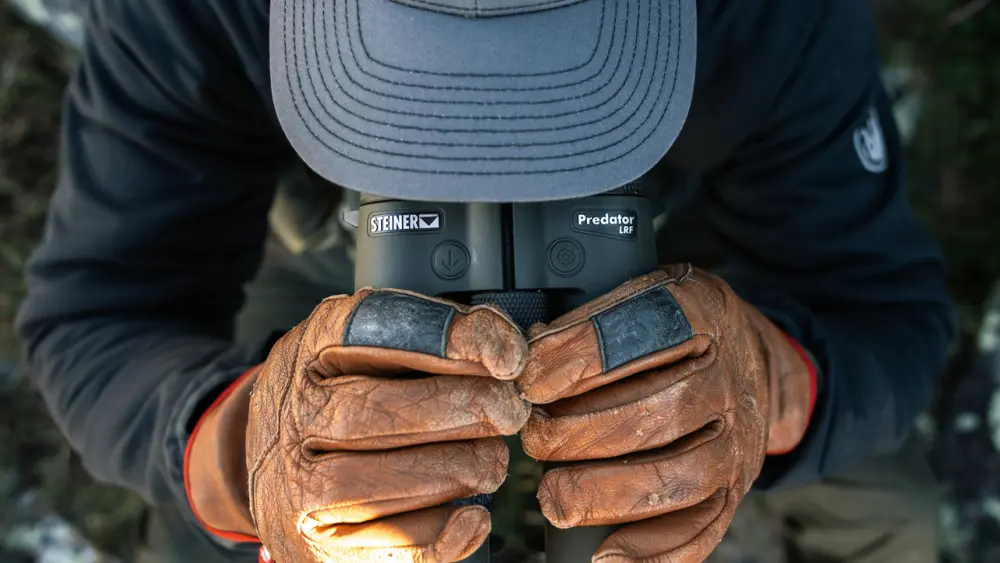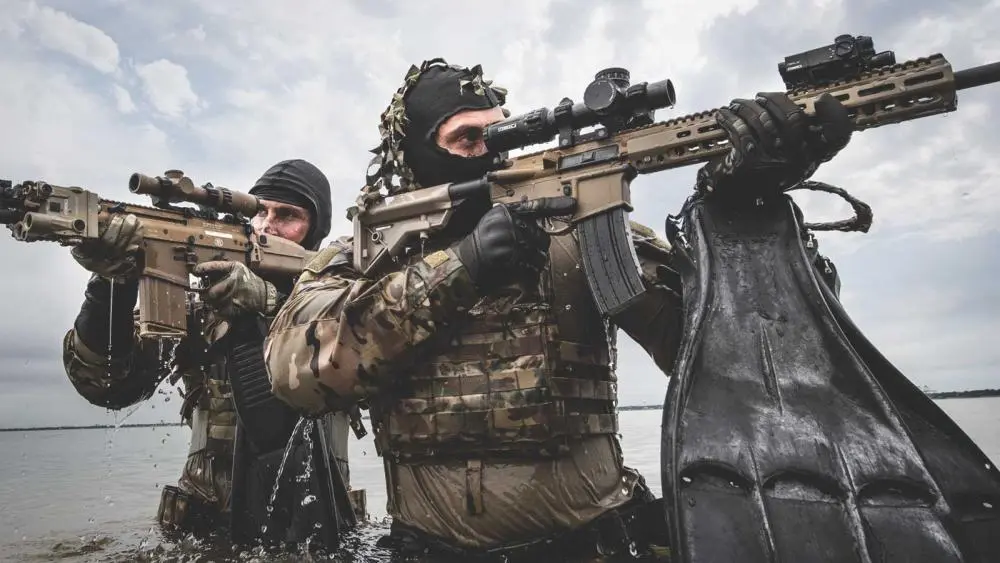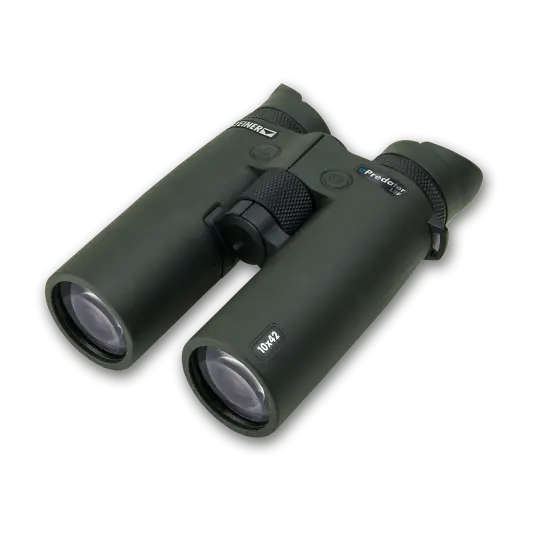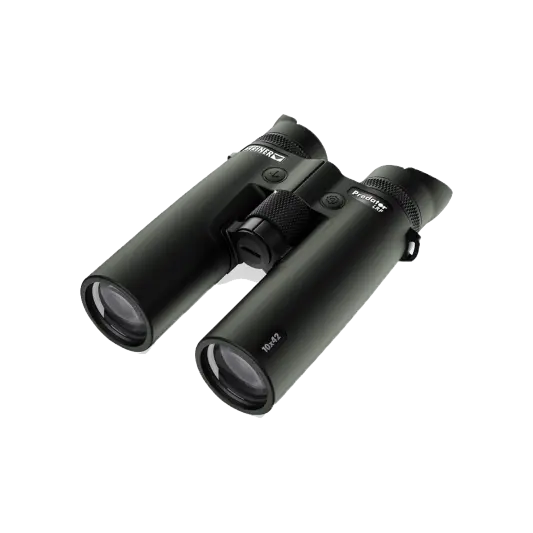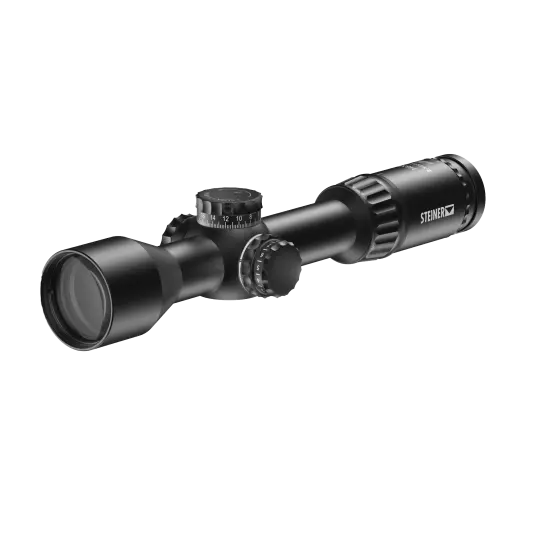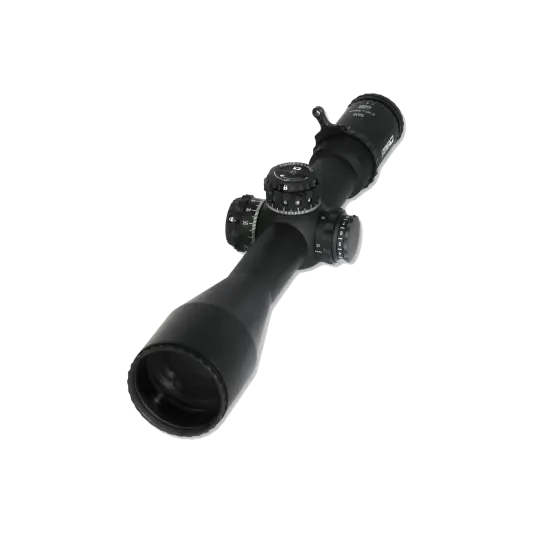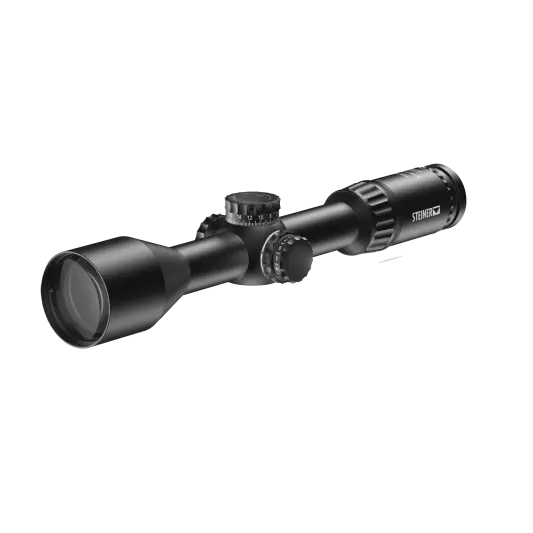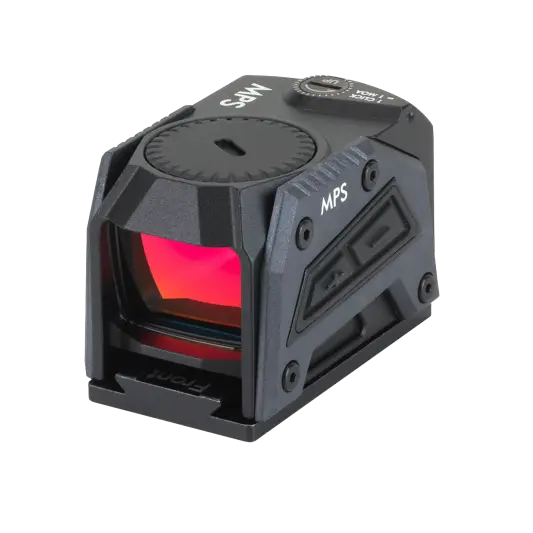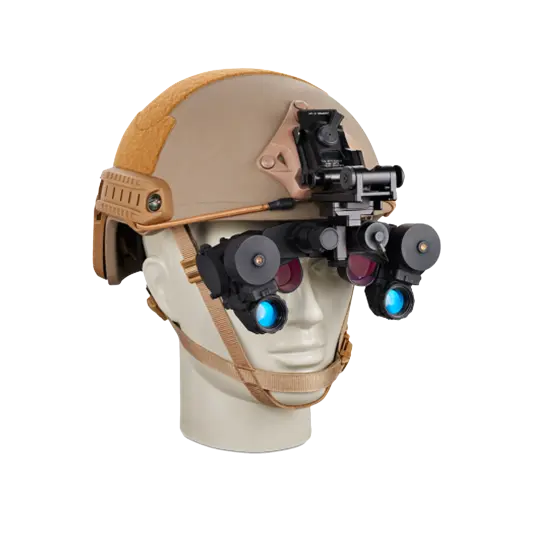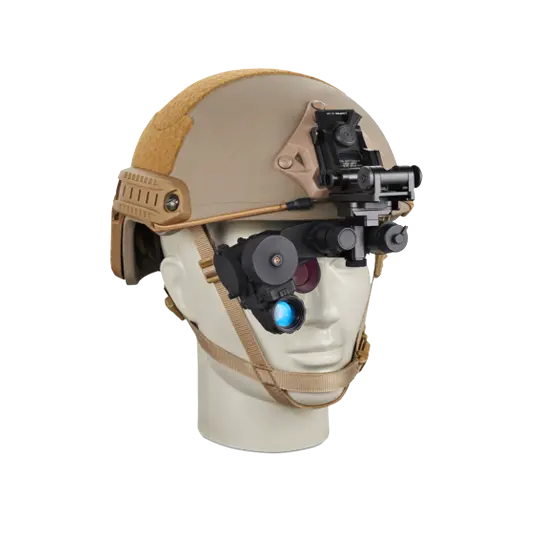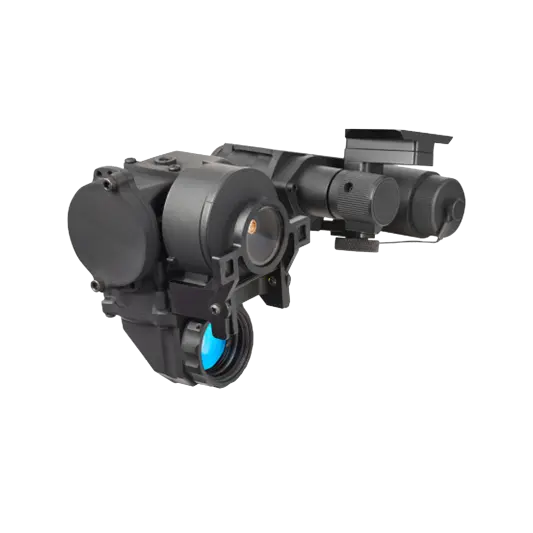Riflescope Glossary
When choosing a riflescope you want to be informed. By understanding the glossary terms below, you can better match your choice to your shooting situation.
Coatings
The optical elements of the riflescope are coated to reduce internal light loss and glare, which in turn ensures even light transmission, resulting in greater image sharpness, brightness, color fidelity and contrast.
Lens coatings range in quality or applications as follows: coated; fully coated; multicoated and fully multicoated. Coated lenses are the lowest performance and basically will not result in much satisfaction. Fully coated lenses are quite economical and can work well depending on your needs. Multicoated or fully multicoated lenses are both very good choices. Fully multicoated lenses give the best light transmission and brightest images, and are therefore the most desirable.
Steiner offers only multicoated and fully multicoated lenses in special formulations using a variety of proprietary mineral source substances to produce outstanding viewing results.
Click Value
The click value is the amount of adjustment for a single movement on the windage and elevation turrets. It can be measure in MOA, centimeters or mils. Each click will adjust the scope’s point of impact ¼ inch at 100 yards (MOA), 1 centimeter or 1 mil at 100 meters (10 cm equal 1 mil). If your scope has turret caps, te adjustment scale can often be found inside the turret caps.
Diopter
A measurement unit that expresses the refractive power of a lens. A lens with a focal length of 1 meter has a refractive power of one diopter. Lenses with shorter focal lengths have greater power in diopters. Accordingly, a lens with a focal length of one-quarter meter has a power of four diopters. The refractive power of converging (convex) lenses is positive; the refractive power of a diverging (concave) lens is negative.
Exit Pupil
Measured in millimeters, this is the diameter of the beam of light that leaves the eyepiece of a riflescope. The larger the exit pupil, the brighter the image will be. Having a large exit pupil is an advantage under low light conditions.
The human eye is capable of dilating between 5mm – 7.5 mm after it adapts to the dark. The closer the exit pupil is to your eye dilation, the bright the images will appear. To calculate the exit pupil, divide the size of the objective lens by the magnification of the riflescope. For example, the exit pupil of a 3-15x56 is 18.6 at 3x and only 5.0 at full magnification.
Eyepiece Ocular
The lens or lens group between the final image in a visual optical instrument and the viewer’s eye. It serves to magnify that image, thereby determining the magnifying power.
Eye Relief
The distance from the ocular (rear) lens of an optical system to a point at which the user’s eye can see the full field of view. “Long-eye-relief” binoculars and spotting scopes allow users to see the entire field of view while wearing eyeglasses. Telescopic sights used on hard-kicking firearms must have especially long eye relief to reduce the likelihood of the ocular striking the shooter’s eye or face.
Field of View
The size of the area that can be seen while looking through a riflescope is referred to as the field of view (FOV). Field of View refers to the area that can be viewed in feet at 100 yards or meters. Field of view is directly related to magnification. At higher scope magnification, the field of view is smaller. A larger field of view is best in situations where the objects are moving or you’re scouting a large area.
Hold Over or Hold Off
At distances beyond your point of zero, Hold Over is the amount of adjustment in your point of aim that is needed to compensate for the trajectory or drop of your bullet. Steiner offers several reticles that have hash marks below the center cross hair that correspond to specific distances to help you determine Hold Over.
Hold Off is the amount of adjustment that is necessary to compensate for wind drift. At longer ranges, wind can cause your bullet to drift away from your target. The Steiner Plex S1/S7 reticles have cascading dots and lines to help you determine Hold Off at distance.
Image or Focal Plane
A plane at right angles to the principal axis of a lens or mirror on which the best image of an object is focused.
Light Gathering Power
A term used to describe the capacity of objective lenses to receive light. Light-gathering power can be calculated as the square of the objective’s diameter in millimeters. For example, doubling the diameter of the objective, quadruples the light gathering power.
Light Transmission
The riflescope’s ability to transmit enough of the available light to give a sufficiently bright and sharp image defines its brightness. All these factors affect brightness: objective lens diameter, magnification, the type and quality of the objective lens glass and the type of lens coatings.
At Steiner, all riflescopes are tested to perform to the highest “light transmission” which means that light is brought into the objective side and then measured at the exit or the eyepieces. The percentage remaining is light transmission.
Magnification
Magnification is the degree to which the object being viewed is enlarged. For example, with a 3-15x riflescope, you are able to magnify the object or target from 3 to 15 times bigger that it would appear with the human eye. The level of power also affects the brightness of an image and field of view, so at lower power, the image will be brighter and the viewing area will also be larger.
Mil
A unit of angular measure that is subtended by one unit of length at a distance of 1,000 units of length, such as one meter at a distance of 1,000 meters. The spaces between dot centers on mil dot reticles subtend 3.6 inches at 100 yards, 7.2 inches at 200 yards, 10.8 inches at 300 yards and so forth.
Minute of Angle
Minute of Angle (MOA) is a unit of measurement of a circle, and is 1.0472 inches at 100 yards. For all practical purposes it is called 1 inch at 100 yards. It is 2 inches at 200 yards, 5 inches at 500 yards, one half inch at 50 yards, etc. Windage and Elevation turrets on scopes usually correlate with MOA, and are most often set to adjust MOA at the rate of ¼ MOA per click, or adjustment.
Objective Lens
The objective lens of a riflescope is the front lens. The diameter of one of the lens is typically measured in millimeters. It is the last number listed in the product description. For example, a 5-25x56 will have a 56mm objective lens. The diameter of the lens determines how much light is delivered to your eye. A larger lens translates into greater detail and image clarity. This is especially useful in low light conditions such as dawn and dusk.
Ocular Lens
The ocular lens is the lens closest to your eye. You look into the ocular or eyepiece to see the images that are magnified by the scope. The exit pupil is emitted from this lens.
Parallax
Parallax is the apparent movement of the reticle in relation to the target.. This is most noticeable when the eye is moved off of dead center when looking into the scope. If you move your eye a little off center to any direction and the crosshair remains on the same position of the target, you are said to be “parallax free”. If, on the other hand, you move your eye a little bit and the target appears to move within the crosshair, you are experiencing parallax error. Parallax error generally variable power scopes with the greatest zoom ranges. Some Steiner rifle scopes are preset to be parallax free at 100 yards, while other offer a Side Focus adjustment to eliminate parallax and reduce aiming errors at longer ranges.
Power
The power and magnification terms are the same on a Steiner riflescope. It represents the high and low range of magnification (Example 5-25x means objects are 5 times closer at low power and 25 time closer at the highest power).
Resolution
Resolution is a measurement of the riflescope’s ability to distinguish fine detail and produce a sharp image. Better resolution also delivers more intense color. Resolution varies in relation to the size of the objective lenses. Generally, a larger objective lens will deliver more detail to the eye than a smaller objective lens, regardless of the magnification.
Actual resolution is determined by the quality of the optical components, the type and quality of the optical coatings, atmospheric conditions, collimation (i.e. proper optical alignment), and the visual acuity of the user.
Reticle
A reticle or “crosshairs” on a scope provide aiming reference. Steiner offers a variety of reticles for hunting, tactical and precision shooting.
Reticle Focus
Not to be confused with the eyepiece focusing on binoculars and spotting scopes, this adjustment on eyepieces of telescopic sights exists for the sole purpose of making the reticle appear sharp to the shooter’s eye. It should not be used for focusing the image of the object being viewed.
Trajectory
Trajectory is the flight of your projectile after it leaves the barrel. Your bullet flies in an arc and the amount of arc depends on the projectile weight and velocity.
Tube Diameter
The most common tube diameters are 1-inch, 30mm and 34mm. The greater the diameter of the scope tube, the more rigid and durable it is. A larger tube diameter also translates to more elevation adjustment range, which is important for long-range shooting. It also determines which size rings your scope will require.
Turret
A turret is one of two knobs located in the center of the scope tube. They are used to adjust windage and elevation when sighting in. They can also be used to adjust point of aim. They are marked in increments or clicks in ¼ MOA, 1 cm or 1/10 mil increments.
Twilight Factor
Twilight factor is the measurement of the efficiency of a rifle scope in low light conditions. The higher the twilight factor, the more usable the scope is in twilight conditions. The formula for determining twilight factor is: The square root of magnification times the diameter of the objective lens. Coatings and glass quality are not represented in this figure.
Zero
Zero is the distance that your scope is sighted in. A 100-syard zero means the point of impact for your caliber and bullet is 100 yards.
